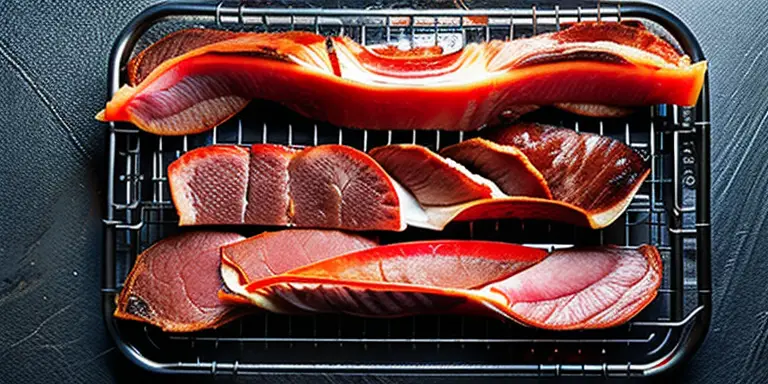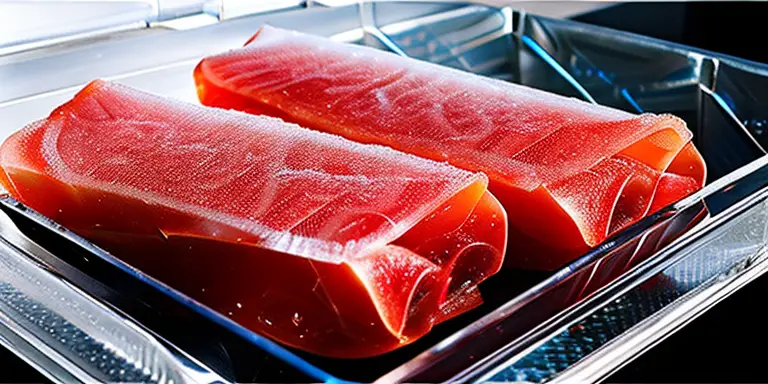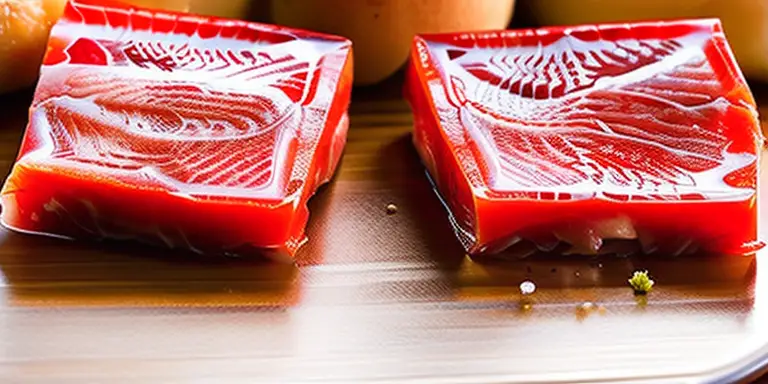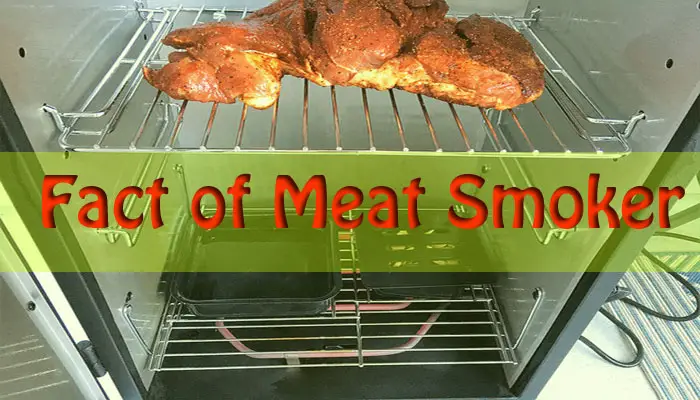Freezing food, especially frozen meat, is becoming popular in the twenty-first century. Most guardians are showing consciousness of frozen meat because of its quality. It is a pleasant idea to freeze the meat. This processing extensively results well in the hot summer season.
For this reason, teenagers also agree with this process. The Principal organization USDA has considered that 0°F or -18 degrees Celsius is the standard for freezing meat.
But long-time freezing, changing temperatures, and the effect of bacteria can contaminate meat quickly. Mutton, lamb, pork, veal, etc are mostly affected meat on this occasion. The bacteria fusion may cause severe contamination.
Consuming this meat may cause severe diseases like skin disease, food poisoning, heart disease, cancer, etc. Some efficacy steps will examine the meat quality and keep you safe from consuming. That’s why, in this blog post, I’ll share some tips and tricks on how to tell if frozen meat is terrible.
Top 3 Metrics of Identifying the Contaminated Frozen Meat
The introduction to knowing if frozen meat is bad can be intimidating. After all, it’s not always easy to tell if the food you’re about to eat is still safe to consume. It’s essential to keep yourself out if unwanted signs arise on food, such as discoloration, ice crystals inside the package, and a foul odor after thawing to avoid eating something that could pose a risk to your health. I have discussed the three main ways below.
1. Appearance
2. Smell and
3. Touch
Check frozen meat through Appearance
Contaminated meat can seriously impact your health, and it’s essential to be aware of the signs that the heart goes white only. In this section, I’ll discuss the appearance of rotten meat and how to identify it. So that you can stay safe and healthy.
Discoloration

The discoloration is a significant sign determining if frozen meat is bad. Generally, raw meat should have a bright red or pink color. If it has taken on a grayish-brown hue or has dark spots on it. This can be a sign that the meat has gone bad. It’s also wise to check for freezing burn, as this will appear as white spots or discoloration on the meat.
Lastly, look for ice crystals inside the package, indicating that the food has been stored for too long. Be sure to check all of these areas before consuming the meat. Because discoloration indicates spoilage and should be avoided.
Freezing burn

Freezing burn is one of the most common signs of spoilt meat. It is caused by air coming in contact with the surface of the meat, and it is marked by dry spots that have a greyish or brown color.
Freezing burns can be identified before cooking simply by examining the surface of the meat.
If you notice any discoloration, it may be a sign that the meat has been freezer burnt and should not be consumed. To prevent the freezing burn from occurring, make sure you have wrapped or packaged your frozen meat correctly so that no air can reach it.
Ice Crystals Inside the Package

Ice crystals inside the package are a tell-tale sign that the meat has been exposed to air and is no longer safe to eat. When the meat is left in the freezer for too long, moisture will escape and spread on the surface of the package. It is essential to check for these crystals before consuming frozen meat, as they indicate that eating is no longer safe.
Slimy Texture
One of the most critical indicators of spoiled meat is the slimy texture that can be noticed during the thawing process. The indication means the meat has gone bad and should not be consumed.
After thawing, the texture should be checked if it’s sticky or slimy, it is likely no longer safe to eat. Additionally, a foul smell may accompany this slimy texture, which indicates that the food has gone bad. If your frozen steak has a slimy texture and a bad smell, it is best to discard it immediately.
Mold Growth
One of the telltale signs of spoiled frozen meat is the presence of mold growth. It may arise because of long-term freezing. It is essential to check for signs of mold before consuming the meat, as it can be dangerous to eat.
Mold can appear in different shapes and colors, so it is important to check carefully. If you notice any mold on your frozen beef, discard it immediately and do not consume it.
Signs of Dryness

Freezer burn is one of the frozen meat’s most common signs of dryness. This occurs when air comes into contact with the meat’s surface and converts it into dry and discolored. Freezer burnt beef has dry spots that look greyish or brown, which may be rigid or crunchy.
When you unwrap the steak, the edges will be brown and dry. While safe to eat, it will taste terribly due to the lack of moisture.
To check for freezer burn, look for any discoloration or signs of dryness on the steak before cooking.
Check frozen meat through Smell
Using your sense of smell, you can quickly and easily identify whether the meat is safe to eat. If you find the meat is unsafe to eat, don’t hesitate to throw it out!
Smell Test
The smell test is a great way to determine whether your frozen meat has gone bad. If the meat has an ammonia-type odor, it is likely no longer safe to consume. You can also check for any foul odor after thawing the meat. If it smells rotten or sour, the taste will smell rotten.
Additionally, any mold growth or slimy texture can also indicate that the meat has gone bad and should not be consumed.
Chew Test
The Chew Test is one of the most reliable ways to determine if frozen meat is bad. The texture of the meat can provide valuable information about its state. If it is challenging and dry, it has likely been exposed to air, and freezer burn has occurred.
Additionally, if the meat feels slimy or sticky, it has likely gone bad. It is important to remember that freezer burn does not make the meat unsafe to eat. It simply affects its taste and texture.
Therefore, if you notice any of these signs while chewing the frozen meat, it is best to discard it quickly.
Ammonia-Type Odors
Ammonia-type odors are one of the most common that refer the rotten meat. If the meat has an unpleasant odor, it has likely gone bad. A strong ammonia smell can indicate that the meat has been contaminated with bacteria and should be discarded immediately.
Additionally, if the meat has a sulfur or ammonia smell, this can also be a sign that it is no longer safe to eat. It’s important to remember that fresh steaks do not have an unpleasant smell.
So if you detect any type of sulfur or ammonia odor, then it’s best to discard the meat.
Rotten or sour odor
Rotten or sour odors can be a sure sign of spoiled meat. This is true for both raw and frozen meat. If the meat has a sour and putrid smell, it’s likely gone bad.
It’s essential to check any piece of frozen steak you’re about to cook, as the smell may only be evident once it’s thawed out. If you detect such an odor, it’s best to discard the meat rather than risk becoming ill from consuming it.
Foul Odor After Thawing
Foul odors are often the most obvious signs that your frozen meat has gone bad. Once defrosted, you may notice the presence of an unpleasant odor.
If you detect a foul odor emanating from your frozen meat, it is best to discard it rather than risk consuming it. It is also essential to store any fresh meat in the refrigerator and away from other food items to avoid cross-contamination.
Check frozen meat through Touch
Touch allows you to quickly and easily check the quality of your meat, it confirms the meat quality. The tenderness, Texture, and stickiness of frozen meats will inform you whether frozen meat is bad or good.
Tenderness of Frozen Meat
When determining if frozen meat is bad, tenderness can be a significant sign. If the meat is too tough when you touch it, it has likely been frozen for too long and may not be safe to consume.
To check for tenderness, gently press on the steak with your finger. If it feels firm and does not give in easily, then symptoms show that it is freezer burned and should be discarded. It is likely safe to eat if it feels soft and gives slightly when you press it.
The Texture of Frozen Meat
When examining frozen ground beef, it’s important to check for consistency. Frozen ground beef should be firm and not soft or sticky. If the beef feels soft or sticky, it may be a sign that the product has gone bad.
Additionally, if the ground beef seems unusually dry, it may be a sign that it has been frozen for too long. During this moment, it is best to discard the meat and purchase fresh beef instead.
Stickiness of Frozen Meat
One of the easiest ways is to check frozen meat is bad by stickiness. The sticky, slimy, or tacky, it’s likely no longer safe to eat. It’s important to note that some ground beef may feel slightly sticky when raw, so it’s crucial to ensure the texture and smell seem “off” before tossing it out.
Additionally, if you thaw something and it smells bad or has a sour or rotten odor, it’s best to discard it. It means the meat is rotten, so stay away from this.
Final Words
Here I discussed how to tell if the frozen meat is bad. But you should keep the meat at the right temperature. Slight changes may be resolved by keeping meat in cold water, oven, etc. It may remove bacteria and confirm consumption safety.
But taking bacteria-contaminated meat may suffer cardiovascular, neurological, and nightshade diseases. So avoiding is safer than treating. If you doubt the meat is poisonous, throw it out rather than process it.
Rita C. Donnell (Jennifer) has spent the last 26 years studying and practicing nutrition science. She has used a larger part of this time in improving people’s livelihoods. She has done so by coming up with unquestionable ideas on how to tackle food problems in her community. Readmore



